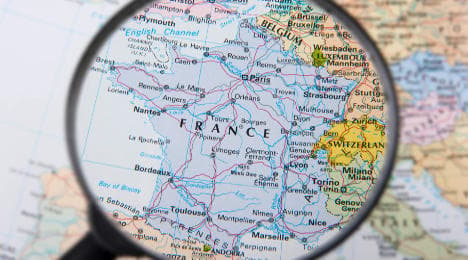A portrait of modern France in ten stats

From an explosion in the number of homeless people to the number of French people descended from migrants - here's ten stats that give a portrait of the modern France.
France’s National Institute for Statistics and Economic Studies (INSEE) released its 2014 social portrait of the country on Wednesday, which highlights how French society has evolved over the years.
We've picked out ten of the more interesting stats that presents a picture of the state of modern France.
Record-high population

There's more French people than ever before. France’s population, which includes metropolitan France and the overseas departments, has broken the 66 million barrier thanks to 280,000 births in 2013 corresponding to an increase of 0.42 percent. For comparison, the population of the UK is at 64,308,000 and that of Germany at 80,780,000. Despite the new population record, fertility rate in France fell below two children per woman in 2013.
Increase in Sunday work

With the debate on Sunday working in full swing it’s interesting to see that working hours on Sundays are already on the rise. In a four-week period 20 percent of employed people worked at least once on a Sunday. People employed in sectors such as agriculture, gastronomy, business or transport are most likely to be called in on a Sunday, with at least one in three employees working on weekends.
An explosion in the number of homeless people

Homeless people in France’s major cities are a common sight now due to an alarming increase of 44 percent in the homelessness rate between 2001 and 2012. INSEE estimates that 81.000 adults and 31.000 children are currently living without a permanent roof over their heads, though the actual number may be much higher. Some 55 percent of those counted were born abroad, and half of homeless people are of African descent. While the majority of homeless people are young men, the number of women and children on the streets is increasing, especially among those born abroad.
The report also found that a quarter of homeless people work, however, they mostly work part-time, on short contracts, and do low-quality jobs. According to the report, they often don’t have degrees and aren't proficient enough in French, which makes it difficult to enter the labour market.
Two million people on welfare benefits

The economic crisis and France’s rising unemployment rate have had a major impact on the number of people receiving welfare benefits. Between 2008 and 2012, the amount of people benefitting from RSA (Active Solidarity Income) has increased by 26 percent, meaning 1.7 million people currently depend on it, and 400.000 people receive ASS (Special Solidarity Allowance), which corresponds to a rise of 27 percent.
Higher average annual wages

The report has some good news on average annual wages in France, which stand at €20.100 in 2012, having increased by 0.2 percent between 2007 and 2012. However, compared to a 0.6 percent rise between 2002 and 2007, it progressed at a much lower rate than prior to the economic crisis.
Lower inequality

The report shows inequality has gone down albeit slightly. The standard of living of the poorest 10 percent of the population has increased by 0.1 percent in 2013, while the richest 10 percent have seen a decrease of 1.7 percent. However, they still earn 6.6 times more than the ones at the bottom of the scale with an average monthly income of €4,963 compared to €754.
Ten percent of French descended from migrants

About 10 percent, 6.7 million, of France's population are descendant from immigrants, meaning they were born in France and have at least one parent that was born abroad. According to INSEE, people descendant from immigrants will be less active in the labour market than people without a migrant background, but still more active than their mothers.
68 percent of French people in good health

Despite French people’s well-known worry about health matters, 68 percent actually consider their state of health to be good or even very good according to the report. However, medical expenses are still high. Last year, the French spent €186.7 billion on medical care such as treatments at hospitals, medical bills and medicine.
1,300 priority neighbourhoods

Currently, there are 1.300 so-called priority neighbourhoods in 700 different communities with 5 million people affected in total. In these priority neighbourhoods large families and single-parent families are more common, and unemployment rate is higher than in the rest of France.
Cultural budget at a new low

It appears the French currently don’t have much money to spare as the amount of cash spent on cultural activities and hobbies hit its lowest point in 2013 since 1985. In 2013 people only used 8.3 percent of their income for these types of activities compared to 9.5 percent in 2007.
by Simone Flückiger
Comments
See Also
France’s National Institute for Statistics and Economic Studies (INSEE) released its 2014 social portrait of the country on Wednesday, which highlights how French society has evolved over the years.
We've picked out ten of the more interesting stats that presents a picture of the state of modern France.
Record-high population

There's more French people than ever before. France’s population, which includes metropolitan France and the overseas departments, has broken the 66 million barrier thanks to 280,000 births in 2013 corresponding to an increase of 0.42 percent. For comparison, the population of the UK is at 64,308,000 and that of Germany at 80,780,000. Despite the new population record, fertility rate in France fell below two children per woman in 2013.
Increase in Sunday work

With the debate on Sunday working in full swing it’s interesting to see that working hours on Sundays are already on the rise. In a four-week period 20 percent of employed people worked at least once on a Sunday. People employed in sectors such as agriculture, gastronomy, business or transport are most likely to be called in on a Sunday, with at least one in three employees working on weekends.
An explosion in the number of homeless people

Homeless people in France’s major cities are a common sight now due to an alarming increase of 44 percent in the homelessness rate between 2001 and 2012. INSEE estimates that 81.000 adults and 31.000 children are currently living without a permanent roof over their heads, though the actual number may be much higher. Some 55 percent of those counted were born abroad, and half of homeless people are of African descent. While the majority of homeless people are young men, the number of women and children on the streets is increasing, especially among those born abroad.
The report also found that a quarter of homeless people work, however, they mostly work part-time, on short contracts, and do low-quality jobs. According to the report, they often don’t have degrees and aren't proficient enough in French, which makes it difficult to enter the labour market.
Two million people on welfare benefits

The economic crisis and France’s rising unemployment rate have had a major impact on the number of people receiving welfare benefits. Between 2008 and 2012, the amount of people benefitting from RSA (Active Solidarity Income) has increased by 26 percent, meaning 1.7 million people currently depend on it, and 400.000 people receive ASS (Special Solidarity Allowance), which corresponds to a rise of 27 percent.
Higher average annual wages

The report has some good news on average annual wages in France, which stand at €20.100 in 2012, having increased by 0.2 percent between 2007 and 2012. However, compared to a 0.6 percent rise between 2002 and 2007, it progressed at a much lower rate than prior to the economic crisis.
Lower inequality

The report shows inequality has gone down albeit slightly. The standard of living of the poorest 10 percent of the population has increased by 0.1 percent in 2013, while the richest 10 percent have seen a decrease of 1.7 percent. However, they still earn 6.6 times more than the ones at the bottom of the scale with an average monthly income of €4,963 compared to €754.
Ten percent of French descended from migrants

About 10 percent, 6.7 million, of France's population are descendant from immigrants, meaning they were born in France and have at least one parent that was born abroad. According to INSEE, people descendant from immigrants will be less active in the labour market than people without a migrant background, but still more active than their mothers.
68 percent of French people in good health

Despite French people’s well-known worry about health matters, 68 percent actually consider their state of health to be good or even very good according to the report. However, medical expenses are still high. Last year, the French spent €186.7 billion on medical care such as treatments at hospitals, medical bills and medicine.
1,300 priority neighbourhoods

Currently, there are 1.300 so-called priority neighbourhoods in 700 different communities with 5 million people affected in total. In these priority neighbourhoods large families and single-parent families are more common, and unemployment rate is higher than in the rest of France.
Cultural budget at a new low

It appears the French currently don’t have much money to spare as the amount of cash spent on cultural activities and hobbies hit its lowest point in 2013 since 1985. In 2013 people only used 8.3 percent of their income for these types of activities compared to 9.5 percent in 2007.
by Simone Flückiger
Join the conversation in our comments section below. Share your own views and experience and if you have a question or suggestion for our journalists then email us at [email protected].
Please keep comments civil, constructive and on topic – and make sure to read our terms of use before getting involved.
Please log in here to leave a comment.